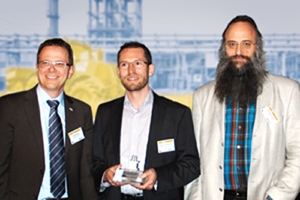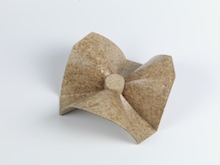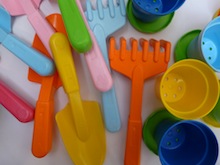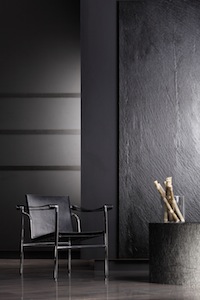With 110 participants from 15 countries, the ‘5th International Congress 2012 on Bio-based Plastics and Composites & Industrial Biotechnology’ has established itself as a major industry meeting-place. This edition focused on Scandinavia, Italy and Germany. Organiser nova-Institute and sponsors Proganic and Coperion expressed their satisfaction with both the latest developments and the lively discussions at the congress. Innovation prizes were awarded to the companies Naporo, Martin Fuchs Spielwaren and Resopal.
 Biomaterials, i.e. bio-based plastics and composites, are becoming increasingly visible on the market and playing an important role in establishing a bio-based economy that will one day completely replace petrochemistry. Companies such as Novozymes (Denmark), Borregard (Norway), Novamont (Italy), Bayer Material Science (Germany), Evonik (Germany) and Henkel (Germany) presented their concepts for bio-refineries, new bio-polymers and natural-fibre-reinforced composites. There are some exciting new materials coming out of the focus region, Scandinavia. For example, the innovative Swedish forge Innventia is working on carbon fibres made from lignin, and Swedish company Södra is developing a material called DuraPulp from PLA and cellulose fibres, which it will soon be possible to injection-mould (‘MouldPulp’). The congress sponsor Proganic, based in Bavaria, exhibited a wide range of new products – especially kitchen articles – made from its Proganic® material, which is composed of PLA, PHA, minerals and natural waxes, making it 100% bio-based. This material is now used to make fibres and yarns, opening up a whole world of potential new uses.
Biomaterials, i.e. bio-based plastics and composites, are becoming increasingly visible on the market and playing an important role in establishing a bio-based economy that will one day completely replace petrochemistry. Companies such as Novozymes (Denmark), Borregard (Norway), Novamont (Italy), Bayer Material Science (Germany), Evonik (Germany) and Henkel (Germany) presented their concepts for bio-refineries, new bio-polymers and natural-fibre-reinforced composites. There are some exciting new materials coming out of the focus region, Scandinavia. For example, the innovative Swedish forge Innventia is working on carbon fibres made from lignin, and Swedish company Södra is developing a material called DuraPulp from PLA and cellulose fibres, which it will soon be possible to injection-mould (‘MouldPulp’). The congress sponsor Proganic, based in Bavaria, exhibited a wide range of new products – especially kitchen articles – made from its Proganic® material, which is composed of PLA, PHA, minerals and natural waxes, making it 100% bio-based. This material is now used to make fibres and yarns, opening up a whole world of potential new uses.
Michael Carus, Director of congress organiser nova-Institute, presented figures for the biomaterials market. Over 360,000 t of biomaterials are already used in Europe, including 145,000 t of natural-fibre-reinforced composites (mainly in the automobile industry) and over 215,000 t of wood plastic composites (WPCs) in the construction and automobile industries as well as the consumer goods sector. WPCs have already achieved a worldwide market volume of 3 million tonnes and are one of the fastest-growing groups materials of all. Yet bio-based plastics are also recording two-figure annual growth rates. Worldwide production currently lies somewhere between 700,000 and 800,000 tonnes per year, and the million mark will be reached in the next few years.
Winners of the Innovation Prize Bio-based Plastics and Composites of the year: Naporo, Martin Fuchs Spielwaren and Resopal
The 2012 ‘Biomaterial of the Year’ innovation prize, now in its fifth year and this time sponsored by Coperion GmbH (www.coperion.com), attracted a great deal of interest. The prize is awarded to new bio-based materials that have been put to practical use. Some 20 companies took part in this year’s competition. The congress’s advisory committee drew up a shortlist of five innovative products, which the relevant firms then presented to the public through a short talk and some exhibits. The audience then voted for their favorites.
1st prize: NAPORO GmbH – Fibre mouldings made from cattail (Typha)
 Robert Schwemmer, Managing Director of NAPORO GmbH from Braunau am Inn in Austria, gave an enthusiastic presentation that won over the expert audience. Naporo manufactures low-density fibre mouldings for various uses from the little-used cattail (Typha). The binding process works through the NAPORO ‘NATglue’ technology, whereby waxes and oils derived from the marsh plant are activated as binding agent. Cattail (Typha) is a wild plant that grows to heights of up to 4 metres, forms large, highly resistant clumps in wetlands and can be managed sustainably.
Robert Schwemmer, Managing Director of NAPORO GmbH from Braunau am Inn in Austria, gave an enthusiastic presentation that won over the expert audience. Naporo manufactures low-density fibre mouldings for various uses from the little-used cattail (Typha). The binding process works through the NAPORO ‘NATglue’ technology, whereby waxes and oils derived from the marsh plant are activated as binding agent. Cattail (Typha) is a wild plant that grows to heights of up to 4 metres, forms large, highly resistant clumps in wetlands and can be managed sustainably.
NAPORO foresees that this new kind of fibre moulding will be used in the building and furniture industries, as well as for housings and later in the automobile industry. The first products have already been launched onto the market.
www.naporo.com
2nd prize: Martin Fuchs Spielwaren GmbH & Co. KG – ‘spielstabil bioline’ toy range made from modified PLA
 Second prize went to the company Martin Fuchs Spielwaren GmbH & Co. KG from Zimdorf with their children’s toys made from modified PLA. This new development was presented by Martin Vollet (Martin Fuchs Spielwaren) and Cord Grashorn (Linotech). The basis for the new ‘spielstabil bioline’ toy range was the newly developed PLA Compound Naturegran PV 6930, 68% of which is derived from renewable resources. The toys have very high material strength and high impact strength.
Second prize went to the company Martin Fuchs Spielwaren GmbH & Co. KG from Zimdorf with their children’s toys made from modified PLA. This new development was presented by Martin Vollet (Martin Fuchs Spielwaren) and Cord Grashorn (Linotech). The basis for the new ‘spielstabil bioline’ toy range was the newly developed PLA Compound Naturegran PV 6930, 68% of which is derived from renewable resources. The toys have very high material strength and high impact strength.
The expert audience was obviously impressed by this joint development between the companies Martin Fuchs Spielwaren, Livemold (injection moulding) and Linotech (developer of the material) and by the many challenges the new material was able to meet in terms of its technical characteristics, the high proportion of biomass, intensive colouring and numerous cases where it was approved for toys. Product recycling was also taken into account: customers can return the new toy to the manufacturer at no cost later for the materials to be recycled.
www.martin-fuchs-spielwaren.de
3rd prize: Resopal GmbH – RE-Y-Stone made from recycled paper with bagasse resin
 Tanja Schäfer was delighted with third place for Resopal’s new RE-Y-Stone material. Basic and decorative paper is bound with a natural resin made from the residues of sugar production (bagasse) to make ‘RE-Y-STONE’. After curing, the bio-resin has thermoplastic properties and together with the papers forms a hard, mechanically highly loadable, dimensionally stable sheet with a robust surface. The bio-composite sheet is made entirely from renewable and recycled raw materials. One particularly impressive feature of the product is that the surface can be custom designed to make the material look like slate or wood.
Tanja Schäfer was delighted with third place for Resopal’s new RE-Y-Stone material. Basic and decorative paper is bound with a natural resin made from the residues of sugar production (bagasse) to make ‘RE-Y-STONE’. After curing, the bio-resin has thermoplastic properties and together with the papers forms a hard, mechanically highly loadable, dimensionally stable sheet with a robust surface. The bio-composite sheet is made entirely from renewable and recycled raw materials. One particularly impressive feature of the product is that the surface can be custom designed to make the material look like slate or wood.
It is mainly used in the construction industry (interior fittings) or for furniture. The new material can even be used for interior floors.
www.resopal.de
The Innovation Prize awards ceremony was held as usual at a formal evening event followed by a gala buffet dinner. Frank Mack from Coperion GmbH presented the winner with a trophy and a certificat, saying: ‘It is a great honour for us to sponsor the 2012 ‘Biomaterial of the Year’ Innovation Prize. As machine-builders we are closely involved with biomaterials and we are happy to have made a contribution to this congress.’
You can a full list of participants and exhibitors along with further information at www.biowerkstoff-kongress.de
All congress presentations will be available on the website from mid April. These are free for congress participants and cost €100 plus 19% VAT for everyone else.
Download this press release as PDF file: 12-03-22_pr_biowerkstoff-kongress
V.i.S.d.P
Michael Carus, (Managing Director), nova-Institut GmbH, Chemiepark Knapsack, Industriestrasse 300, 50354 Hürth, Germany, www.nova-institut.eu, contact@nova-institut.de, +49 (0) 2233 48 14 40.
Pictures from the Biomaterials Congress in Cologne (please reproduce the credits below the relevant photo).
You can download the pictures by going to this link:
www.nova-institut.de/downloads/Biowerkstoffkongress/12-03_Bilder_BWK.zip
Source
nova-Institut, Press Release, 2012-03-21.
Supplier
Bayer MaterialScience AG
Borregaard
Coperion
Evonik Industries AG
Henkel KGaA
Innventia
Linotech GmbH & Co. KG
Martin Fuchs Spielwaren
Naporo Klima Dämmstoff GmbH
nova-Institut GmbH
Novamont S.p.A.
Novozymes
Proganic GmbH & Co. KG
RESOPAL
Södra
Share
Renewable Carbon News – Daily Newsletter
Subscribe to our daily email newsletter – the world's leading newsletter on renewable materials and chemicals










